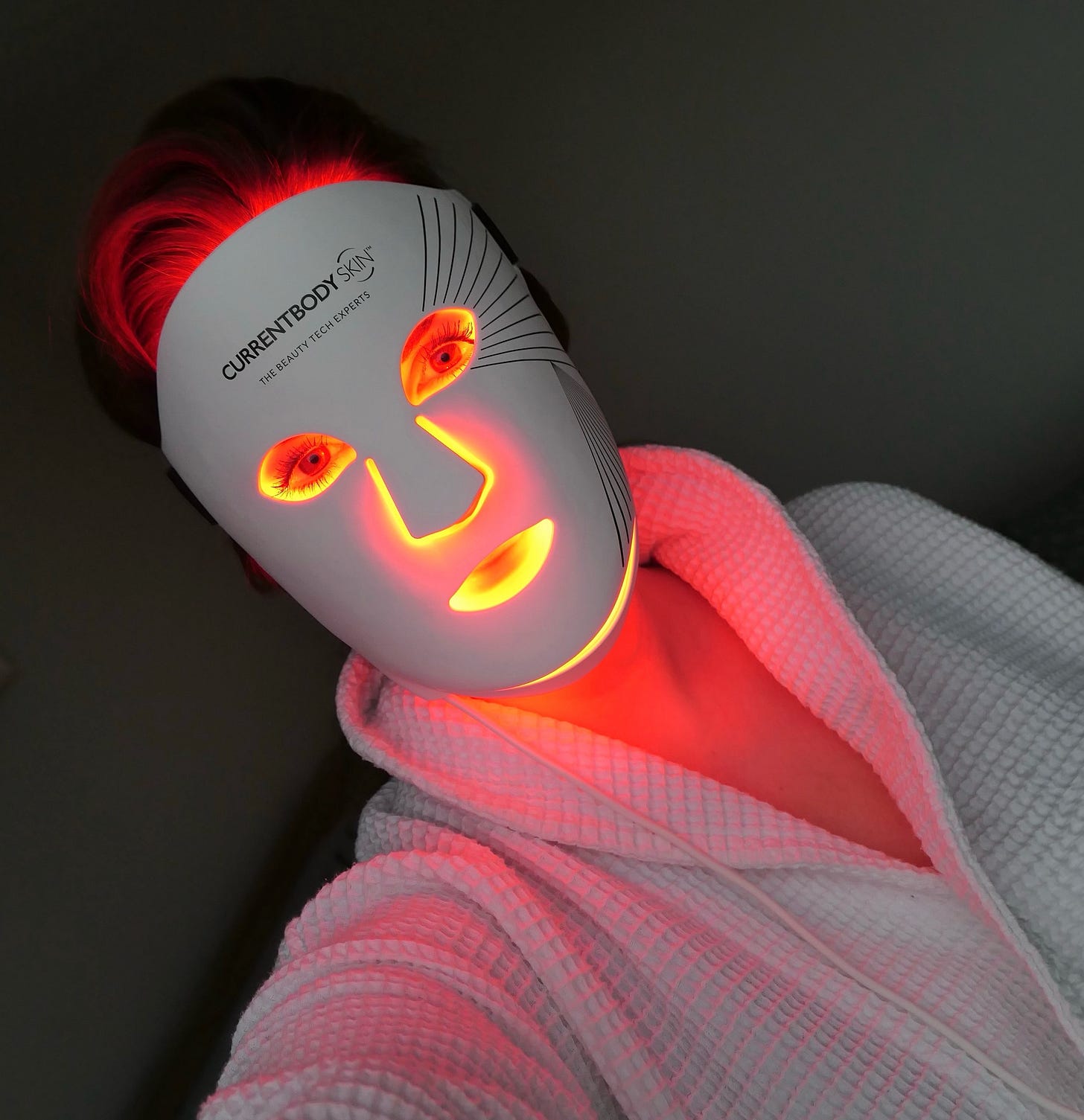A question I’m frequently asked on Instagram is: What’s the best LED mask on the market, and what are the differences between the various options available?
Though the answer might seem complicated, it’s actually quite straightforward.
In this guide, I’ll break down the differences between several of the leading LED masks on the market, with comparison visuals, from brands like CurrentBody, Dr. Dennis Gross, MZ Skin, Omnilux, and more.
This Substack guide is sponsored by CurrentBody. Their goal is to bring a new level of transparency and accountability to the at-home beauty tech world.
Confident in their R&D, technology, coverage, and the quality of the individual LEDs in their masks, they've asked me to write this guide, offering a side-by-side comparison of the various models on the market.
So, let’s get into it.
Why LED Placement Matters
For LEDs to work effectively, they must be placed consistently and evenly across the entire face. Imagine buying an LED mask that provides great coverage on the cheeks but lacks coverage under the eyes or chin - it wouldn’t make sense, right? These gaps in coverage can lead to uneven results and missed treatment zones.
Surprisingly, many LED masks on the market fail to include LEDs in these key areas, and others, such as around the lower face and upper forehead. These are crucial target areas, especially when using LED therapy for anti-ageing purposes.
Why Not All LEDs Are Created Equal
Many brands say their LEDs are accurate within a wavelength of ±2nm (as quoted by manufacturers), but when tested, many masks show significant variations in wavelength output, leading to inconsistent and unreliable results.
For example, each LED could emit a slightly different wavelength, meaning some areas of the face receive optimal treatment, while others don’t. The only way to guarantee effectiveness is by thoroughly testing every single LED light.
What Does This Mean For You?
Before deciding to purchase an LED mask for at-home use, make sure:
The mask you're interested in provides consistent coverage across the entire face, with LEDs that deliver optimal results.
Verify that the brand individually tests each LED in their masks. This information should be available on their website.
Good LED masks are undoubtedly an investment (and must be used consistently - you can read more about that here), so be sure to choose one that targets and treats your concerns in the most effective way.
Masks Compared
Now, let’s dive into some comparison visuals to explore the most popular LED masks on the market. These graphs will compare things like coverage, fit, the proximity of LEDs to the skin, and other design features that impact efficacy and results.
In each graph, there is a detailed comparison between a specific mask and Current Body’s Series 2 LED Mask (which is the one I use).
In Conclusion
I hope this guide is helpful and answers some of the questions you may have when comparing popular LED devices. Most importantly, I hope it emphasizes that the coverage and quality of the LED lights in the mask you choose are key.
Also, it's important to note that not all brands have research or clinical trials to support their claims. Before investing, make sure to check if the device you're interested in has undergone proper R&D. If it hasn't, look for one that has.
As always, feel free to use my code SIMONES for 10% off any purchases you make on CurrentBody's LED devices - and thank you for reading!










So interesting to learn how different each product performs. It's a minefield out there. Thank you for this clarity.